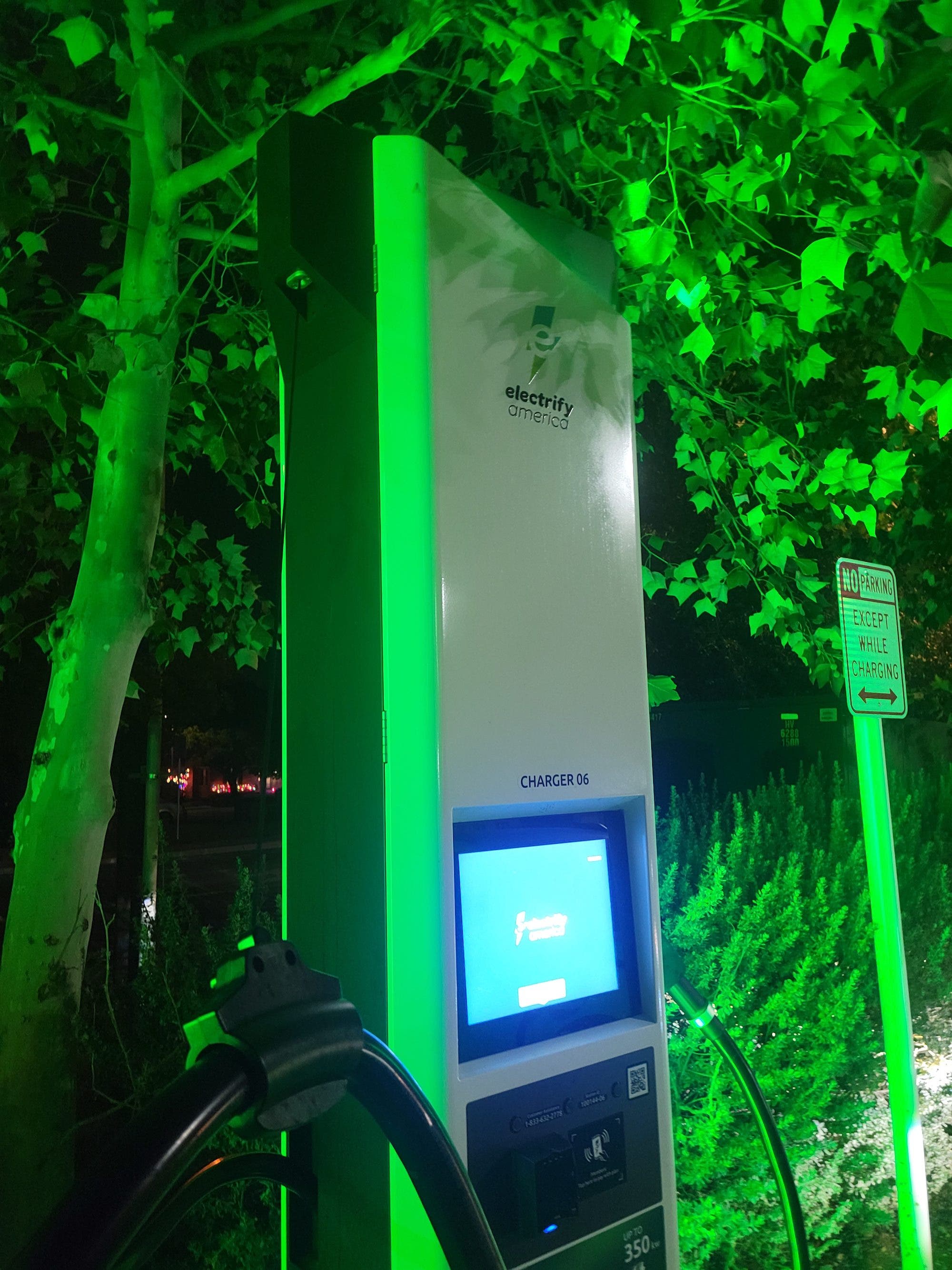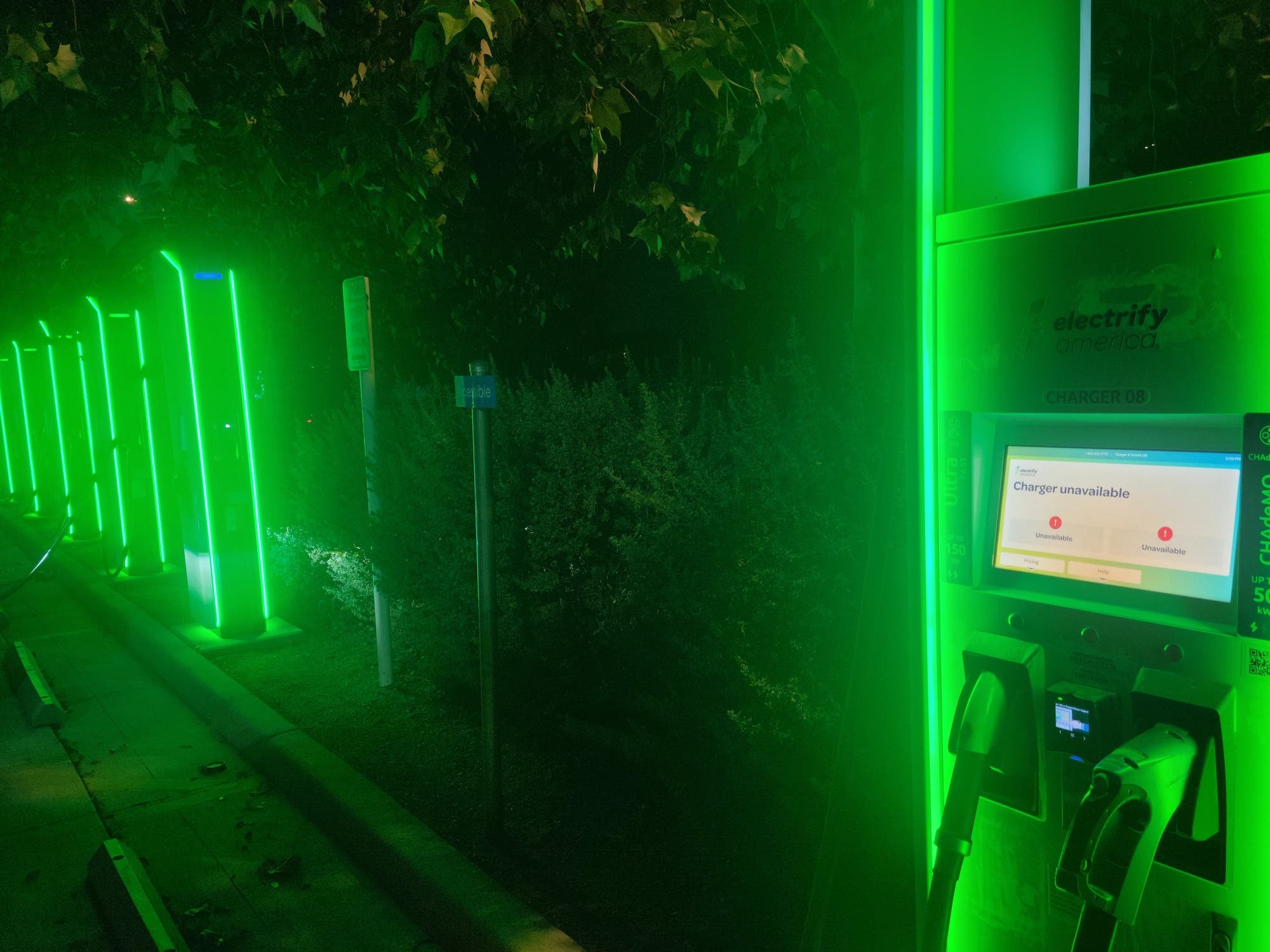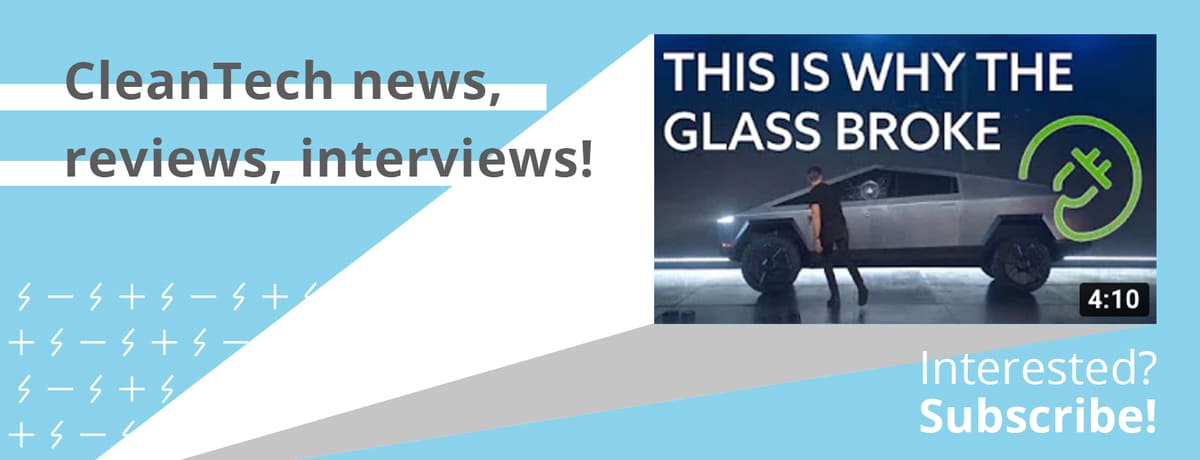On a recent road trip, I stopped in San Antonio for some juice. The Electrify America station I stopped at had recently been down for some upgrades, and it now has the company’s newest station design up and running. You can learn all about the new design here, but reading a press release and/or some tweets and actually using something are two different things, so I wanted to share what it was like using its next-generation stations.
In short, they’re basically everything Electrify America promised.
The charging hardware itself is far more aesthetically pleasing. They still have the company’s signature Borg green accent lighting, but it’s not as bright and buggy as it was with the older stations. Each pedestal takes up less space, and makes up for this by being 8 feet tall and encased in a much more modern and smooth shell.
The good things from past-generation stations are still there. There’s still a large touchscreen, a card reader (which will take debit, but I don’t recommend it), and an RFID reader. Electrify America doesn’t issue RFID cards like EVgo and ChargePoint, but if you set your phone to allow the Electrify America app to use the NFC chip, you can activate a station when other methods fail.
A New Cable System That’s Far Easier To Use
But, as great as the new stations look, how they work is far more important. And, this is where they really shine!

Instead of having two relatively short charging cables to reach different sides of a car, the new stations have one long, long cable. You can see it in the above photo connecting to the driver’s side CCS port on my Chevy Bolt EUV with plenty of slack. It wasn’t hard at all to get the thing plugged in, and it puts a lot less stress on the port.
But, sometimes, you need to reach a bit further to get to the plug. Electrify America thought of that.

The long cable is held up in the middle by a pulley/winch system like many other stations on other networks. But, because the stations are 8 feet tall, they hold a lot of slack in reserve. You can pull them down as far as the screen, and then outward several feet. This makes for being able to reach basically anywhere you’d want on a car. I don’t think you’d reach a port located on the nose of a car that had backed in with this setup, but you could easily, easily reach just about anywhere along the back and sides.
This feature alone makes the new Electrify America stalls infinitely easier to use and more useful than its older stations.
Better Power Sharing
At older stations, each stall has a maximum power output. These are usually 50 kW, 150 kW, and 350 kW. The 50 kW stations are usually a lone CCS/CHAdeMO stall, but sometimes those are good for up to 150 kW, too.
But, at these new stations, every space is good for “up to 350 kW.” Anybody who knows even a little about charging stations and electric utilities would probably think right away, “How can they possibly be getting that much power? That’s INSANE!,” but fortunately it’s not like that. They don’t actually need enough power at the site coming in from the grid to simultaneously provide 8 stalls with 350 kW. In reality, having all stalls full of cars at the peak of their charging curves at the same time is rather unlikely.
So, the site’s power is shared across these stations. If enough people did show up to swamp it, they’d all get reduced charging rates. But, in reality, if you were to pull up to me charging my Bolt EUV at 55 kW and plug an Ioniq 5 or EV6 in, you’d probably get your full charging speed. I’m not taking enough away from the site to get in your way. Likewise, if someone else was charging up past 80% to reach a far-flung destination and was only pulling 20–30 kW, they’re not going to get in the way of you getting a full charge.
This not only helps every driver get the most power possible to get on their way faster, but it makes choosing a stall a lot easier. I’m a nice person, so I try to park my 55 kW EUV in the slowest stall I can to leave room for faster vehicles. If I were to park in a 350 kW space at an older EA station, someone pulling up in a Taycan might have to settle for 150 kW, for example. That would be stupid and unfair.
But, with these shared power arrangements, both me and the rich snob in the Taycan (just kidding, you Porsche owners are cool) can park in any stall and get the fastest possible charge for both of our vehicles. This makes super-peasants like me and people in nicer EVs both happy.
There’s Still A CHAdeMO Plug

For the owners of Nissan LEAFs and other CHAdeMO cars, I’ve got some good news and some bad news.
The good news? They still have a CHAdeMO plug at the stations upgraded to the latest hardware. So, if you need to stop by for a charge, Electrify America is still complying with the terms of the Dieselgate settlement and they’re begrudgingly leaving you exactly one plug at each of the sites that they put them in at. They’re not putting in new CHAdeMO plugs going forward (at least outside of California), but you’re at least not going to lose ground for now.
But, the bad news is that they aren’t going to put in a new station with the long cord and the nicer power sharing gear in for you. The CHAdeMO stall at every site I’ve heard of and at the one I tried in California will keep older station hardware. If you’ve got a LEAF with the plug in the nose of the car, that’s not a big deal as far as plugging in goes, but the reliability of older stations isn’t as good as the reliability of the newer ones.
And, as you can see, the CHAdeMO station at the Walmart in San Antonio was down when I went by.
However, Electrify America isn’t the only provider with CHAdeMO stations. EVgo, ChargePoint, and others are still putting in new stations with CHAdeMO plugs here and there, so you probably don’t need to rush out and sell your LEAF if it’s working well for you.
The Short-Term Bad News For Everybody
While these new stations are great, the sad news is that they usually don’t get put in overnight by magic. When Electrify America decides it’s time to upgrade a station, you’ll get about four days of warning on PlugShare and then the station will be down for 2–4 weeks.
In many places, this really sucks because the Electrify America station is sometimes the only station in the area and you won’t be able to go down that highway in most EVs during the upgrade, or it will be a big inconvenience.
So, if you’re dependent on EA’s network right now for any trips, be sure to check on PlugShare the day before you leave to see if any stations are going to be down. If they are going to be down, be sure to make other arrangements. Sometimes, you can charge up to full at the station before it and barely make it to the next one after. Other times, you’ll need to stop for a while at a L2 station or RV park to get enough charge to make it. Or, worst case, you may need to find a nearby hotel with L2 charging and stay the night.
But, this precarious situation will probably only last for a few more months until they get all of the stations switched over.
All images by Jennifer Sensiba.

Read the full article here



